Top 10 Artworks to See At The Louvre (Other than the Mona Lisa)
The Louvre. An art museum with 35,000 artworks on display. I once heard that it would take a matter of years to make your way through the entire museum if you gave every single item a few seconds. With three wings and “73,000 sq. m (or almost 800,000 sq. ft.) of Western artworks from the Middle Ages to 1848, as well as the art of the ancient civilizations that preceded and influenced them (louvre.fr)” where does one begin? No matter how many times I visit, I leave feeling overwhelmed, drained, but always fulfilled and accomplished. Because of numbers like these, it’s best to have a short list of what you’d like to see and a plan of action to not spend a few years there.
This post includes affiliate links. They will come with a tracking code. If you purchase a product after clicking on my affiliate link, I will earn a small commission at no further cost to you. As an Amazon Associate I earn from qualifying purchases. Learn more about this on my privacy policy.
Becoming a Louvre Museum Armchair Expert
I’m grateful to have been able to visit the Louvre a handful of times, which has made every subsequent visit less frantic. My first encounter with the Louvre was back in 2009 as a high school senior. I think we cared more about the pyramids outside and taking silly high schooler photos with statues than truly anything else. That first trip was when I truly experienced the phenomenon that is seeing the Mona Lisa. Tourists, digital cameras, and the Mona Lisa behind thick glass. The feeling of surprise that she seems smaller in person.
Returning in 2011, I got smart and brought a guidebook (where my love for Rick Steves began) along to make sure I saw more that the Louvre had to offer. This was the first time I remember seeing all of the 'hot spots’ which have served as signposts for all following visits.
2009: Young and living my best Louvre Life
2012: Louvre Pro and finding my favorites
In 2012 I studied abroad in France. Only a couple of hours from Paris and with a free student pass in hand, I felt confident, probably a little snobby, but truly comfortable in my visits. I’d mostly only visit when I had family visiting (mom, dad, friends). I became so relaxed about going to the museum that I would send my visitors into the Mona Lisa room and stand back or wait out in the hallway. I’m thinking I was 'been there done that, cool college kid’, but honestly, seeing the Mona Lisa was never and is never a relaxed experience. Visiting Paris in 2013, I don’t even think I went to the Louvre and prioritized other museums (Pompidou, d’Orsay).
Flash forward to 2019, I’m visiting Paris for the first time in 6 years and have my husband in tow who has never before visited the Louvre. With this information top of mind, a trip to the Louvre was number one on our list. I instantly started thinking about the sheer size of the museum, and how do we see it all in a few short hours.
All of this to say, I care about helping you miss the mistakes I made the first few times. In some visits, I didn’t expand out far enough (only seeing the greatest hits) but others times spending too many hours in the museum leaving in a daze. This list gives an overview of hitting the must sees while also visiting some of the lesser known but equally amazing areas of this massive museum.
A Brief Note on the Mona Lisa
Now don’t get me wrong, seeing the Mona Lisa is worth it in and of itself, especially if you know what you’re getting yourself into. It’s more of an experience, maybe even a pilgrimage. Also, it’s a truly great painting that is known all around the world so it’s always a bucket list item. That said, what should you expect?
When we visited this summer, she was actually relocated to a completely different part of the museum. This created a whole other pilgrimage of sorts where we weren’t alone in expecting to see her in one wing (hot tip: check the museum website before going for closures and changes), and then all realizing at the same time that we needed to backtrack. It was a long walk through small hallways to get to where she temporarily rested. Even before noon on a midday visit, it felt like a mass exodus, flying by countless, priceless works of art in order to reach our intended goal. And also bless those that were trying to view the museum in the opposite flow of this traffic.
Once we arrived at the temporary location, I was quickly reminded of the popularity of the Mona Lisa. We had to wait in line in one room to then get into the room where she was on display. After entering the display room, there was another winding queue that ended in the reward of getting to spend a minute or two in front of her and take a selfie before being asked to move along by security. It’s quick, it’s busy, and she’s not the easiest to see, but the few moments are memorable. She’s probably already on your list, and she’s a lot of work to visit, so that’s why she’s not on this list, but always deserves a few words and a selfie.
Top 10 to See at The Louvre
The list below was gathered from reviewing and following different Paris travel guidebooks (especially the Rick Steves Paris Travel Guide) as well as lived experience making my around the different corners of the museum. Use this as a starting point and some initial inspiration. Feel free to even add them to the map as you create your plan. If you’re looking for some added help, guided tours can be incredibly valuable when you only have a short amount of time.
Winged Victory
1st Floor - Denon - Room 703
What. A. Beauty. Winged Victory is a massive sculpture. She takes over the room the moment you see her. She definitely demands your attention. I almost think she competes with the Mona Lisa for top lady in the museum. My favorite part to pay attention to is the intricate detail of the sculpting around her sea-sprayed clothes, and her sheer size. Also, her wings are amazing. I’ve always thought a great photo spot is a few hundred feet down the stairs with her in the background.
2. Venus De Milo
Ground Floor - Sully - Room 345
The Venus de Milo is probably the second most visited artwork in the museum, so prepare yourself for increased viewers. That said, she’s not behind glass, and she doesn’t have a line to see her, so it’s a fairly easy experience. You might even get lucky and have a few seconds with only a few people around. The best part of her is her s-shaped curve (contrapposto) as she stands there looking so relaxed.
3. Athena
Ground Floor - Sully
She continues the trend of imposing female sculptures. Athena has moved around a few times so I’ve probably missed her in the past, but she’s not to be skipped. I like her because it feels like she’s lending her hand, but also the backdrop where she sits today is beautiful. Towering at over 3 meters tall and then sitting atop a pedestal, she’s interesting simply for her stature.
4. Da Vinci and Other Renaissance Artists
1st - Denon - Room 710
On the normal trek to see the Mona Lisa, most visitors will pass through a series of rooms dedicated to Italian Renaissance art. There are so many beautiful and interesting paintings that often get overlooked when on a mission. Spare a few minutes and spend more time in these rooms leading up to the pièce de résistance. You’ll come across other famous Da Vinci paintings as well as works completed by lesser-famous but equally-talented artists like Marziale. This room itself is beautiful with high ceilings and skylights, it feels nice and airy.
5. Egyptian Antiquities
Ground Floor - Sully - Room 321
The previous 4 on this list are commonly on other shortlists, but number 5 is one of the areas that begins to get off the beaten track. Unlike listed above, this room/space spans a series of rooms, but it’s incredibly worth it. You’ll see countless Egyptian coffins of all different materials and ancient mummies along with their buried artifacts. These rooms focused on Egyptian Antiquities make me daydream about being an Egyptologist uncovering these relics myself.
6. Capital of a column from the Palace of Darius the First
Ground floor - Sully - Room 307
This and other Near Eastern Antiquities spread out between the Richelieu and Sully wings on the Ground Floor. Similar to number 5, these don’t always make it to the top of other lists, but that doesn’t mean they’re not full of stunning artwork. I have a thing for towering sculptures (see 1 and 3), so that’s probably one of the reasons why the Capital of a Column made the list. This is an amazing exhibit overall because they have a digital screen in one of the rooms showing what the original Palace looked like and the rooms include other remnants of the palace. Overall it’s a great collection of some stunning architectural feats.
7. Great Sphinx of Tanis
Lower Ground Floor - Sully - Room 338
For some reason, this isn’t always on lists, but this Crypt of the Sphinx is truly amazing to see. It’s set off on its own making it feel evermore regal. I usually just stumble upon it, and it’s always a welcomed surprise. The sphinx definitely continues my Egyptologist daydreams, but it’s magical, especially when a visit to Egypt isn’t on the (near) current travel list.
8. Napoleonic Apartments
1st floor - Richelieu
These apartments of Napoleon III have a completely different feel than the rest of the museum. Instead of a gallery of paintings, sculptures, or furniture on their own, they create what the rooms would have looked like when they last served as a palace. The furniture is from when Napoleon called the palace home. It’s a little out of the way for those spending most of their time hitting the popular items in the Sully and Denon wings but truly worth the venture. They’re also great rooms for photo backdrops — very regal, but don’t forget, look don’t touch.
9. Medieval Louvre and the Moats
Lower Ground Floor - Sully
The Louvre has a long and winding history including serving as a fortress, then a palace, and now a museum. Venturing to the lower ground floor exposes the remains of the original castle giving a firsthand glimpse of what it used to look like. It’s a quick walk around, and it’s unique to see this side of the museum compared to the ornate decor on the upper floors. I usually tack this on to the end as it’s an easy way to wrap up the day and a short history lesson.
10. Inverted Pyramid
Napoleon Hall
Not as well known as the upright pyramids outside of the Louvre, the inverted pyramid is just as interesting and just as an equal photo opportunity. If you come in through the main entrance underneath the large outdoor pyramid, you’ll have to divert from the main lobby to view the smaller inverted relative. It’s easy to see if entering or exiting through the Carrousel du Louvre, as you’ll pass it on the way. During busy times there are plenty of people around, so you’ll have to take turns snagging a photo with it, but it’s a quick first or last stop on your Louvre visit. It provides a fascinating angle and is also lovely to see the light it lets into the underground space.
Of course, these are only 10 artworks among the thousands, but they are also spread out across the museum. Give yourself time to enjoy the journey as you check off items on your must-see list. You might even find new hidden gems to create your very own top 10. Any artworks that you love and think should be on this list?
Want help making your way around the museum? Check out these guided tours as options:
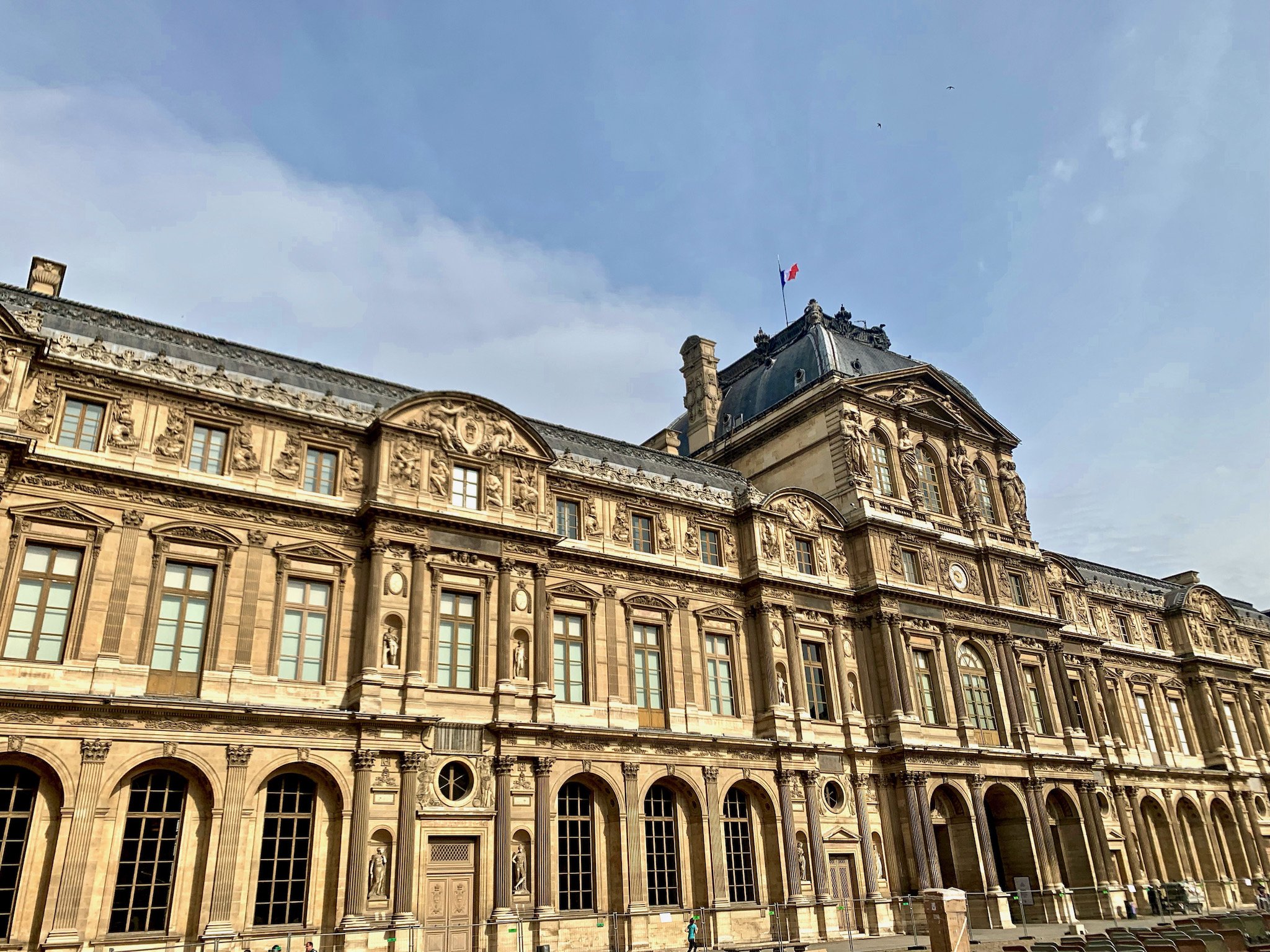




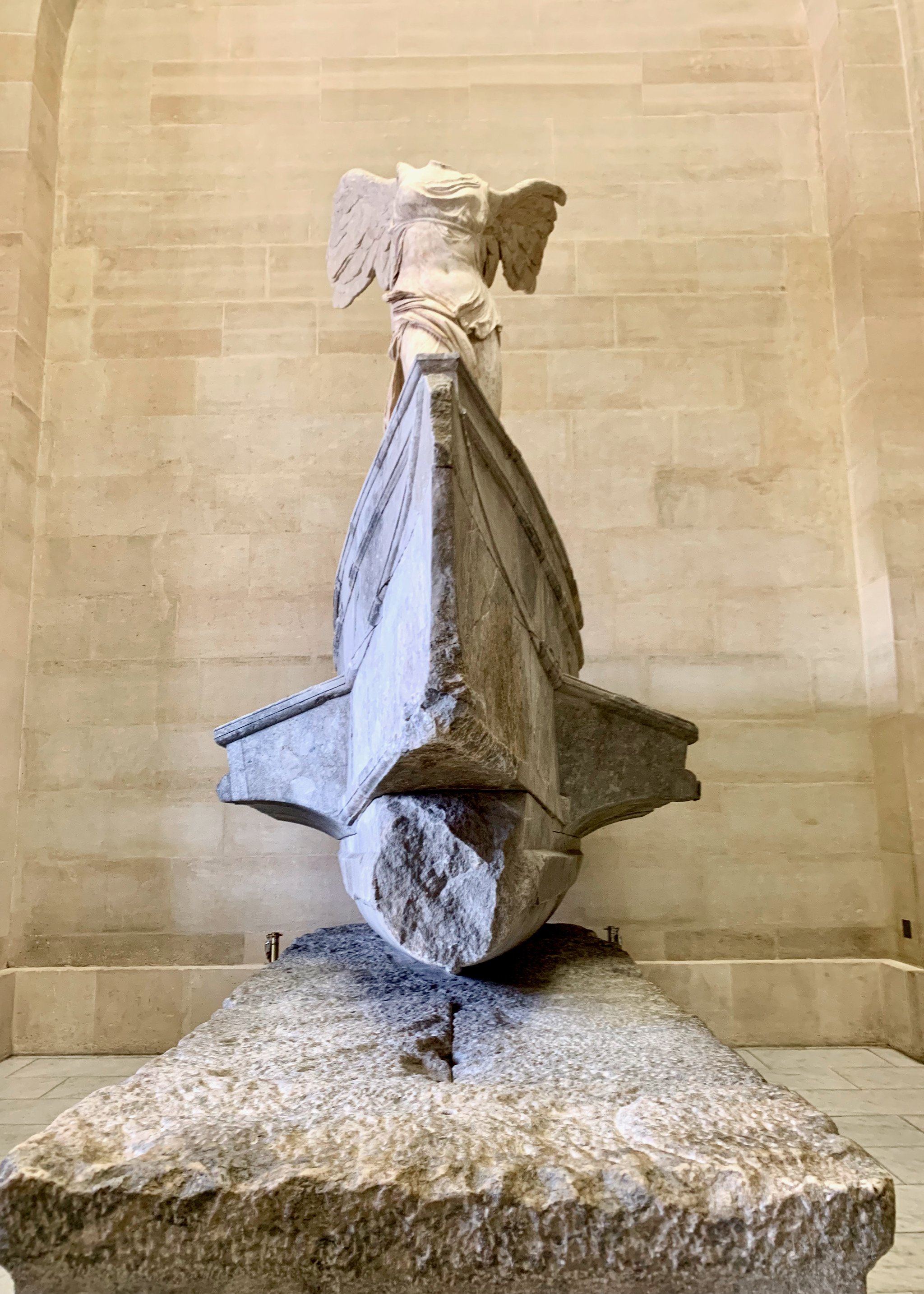

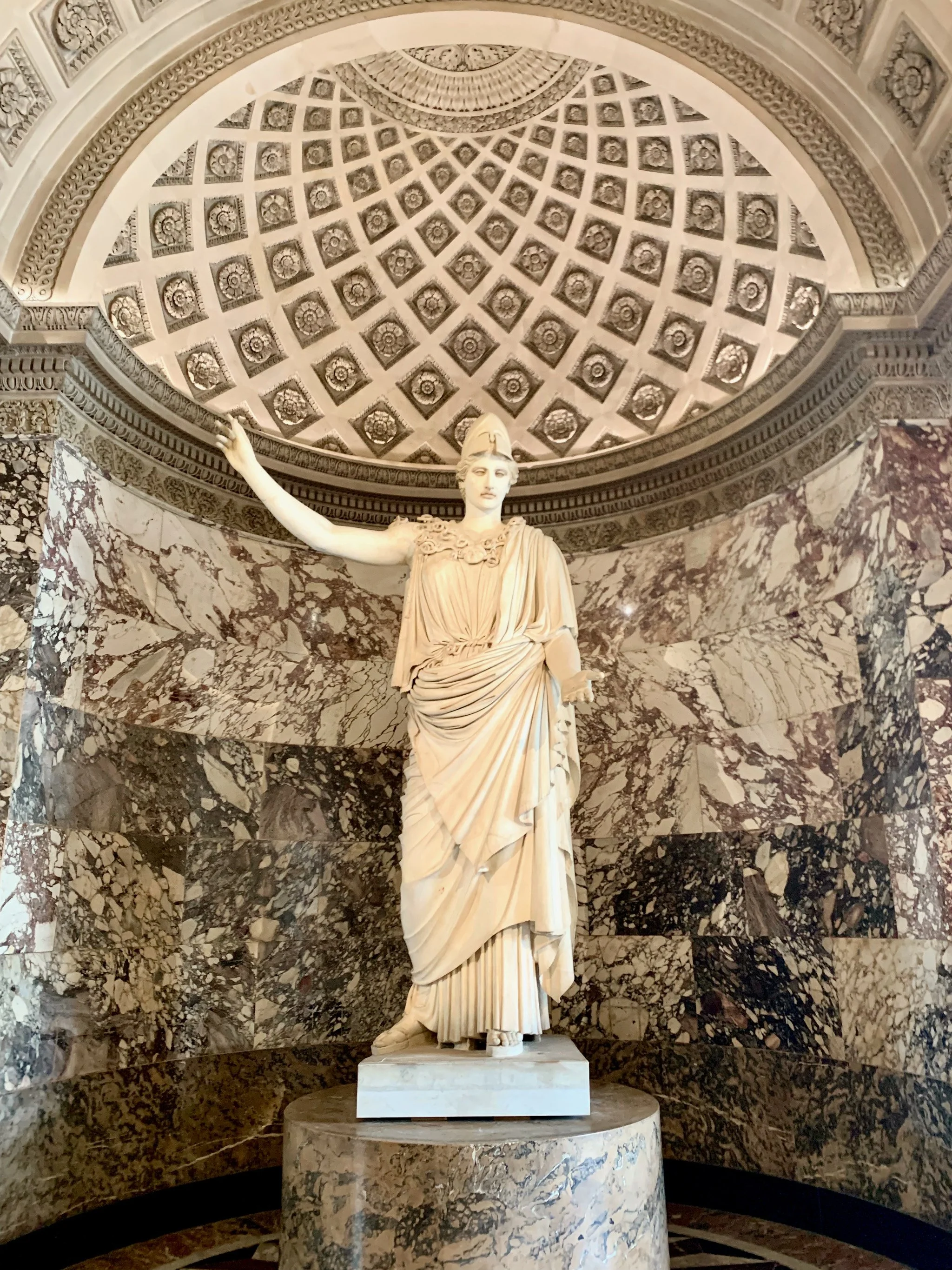



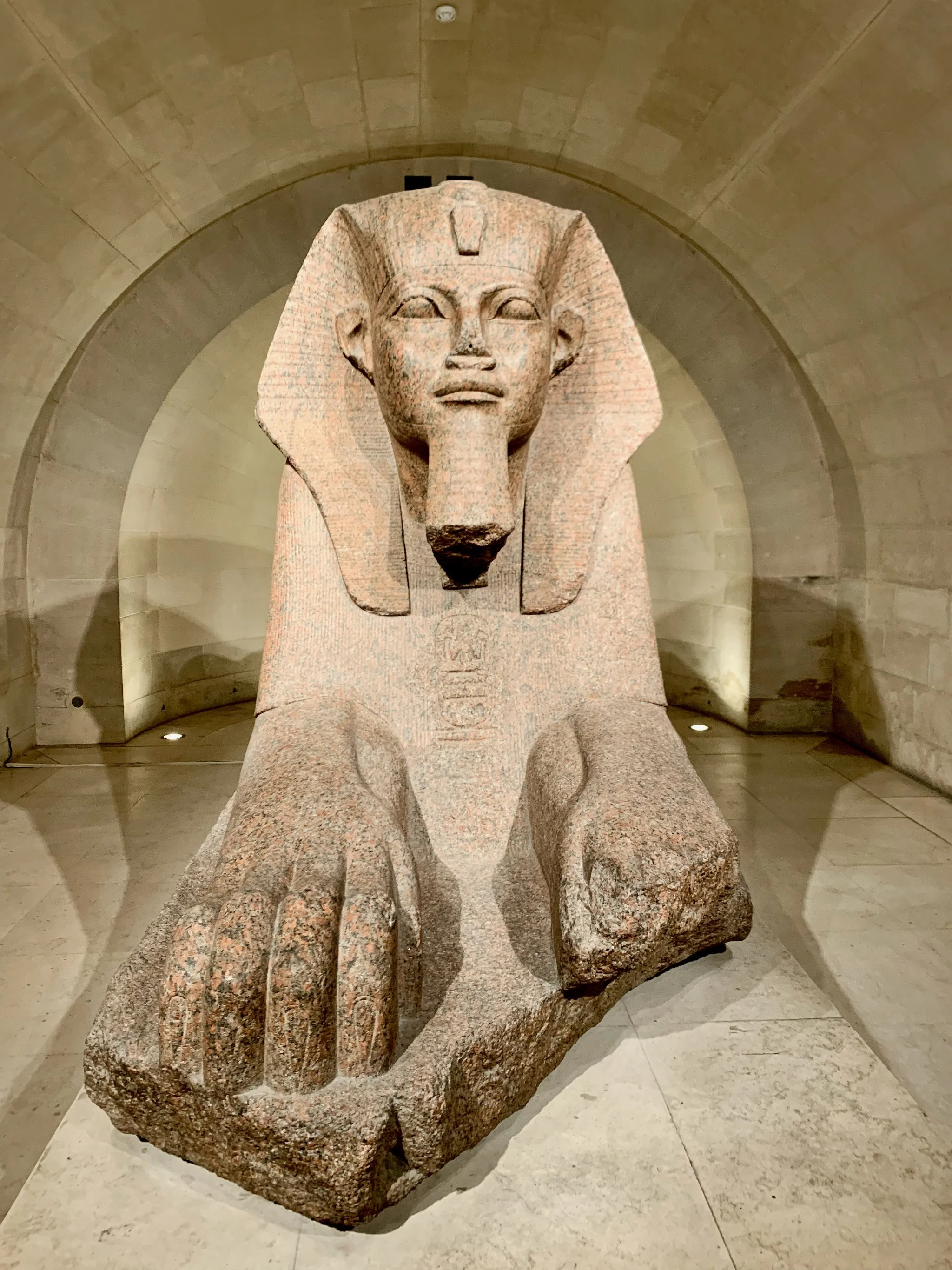
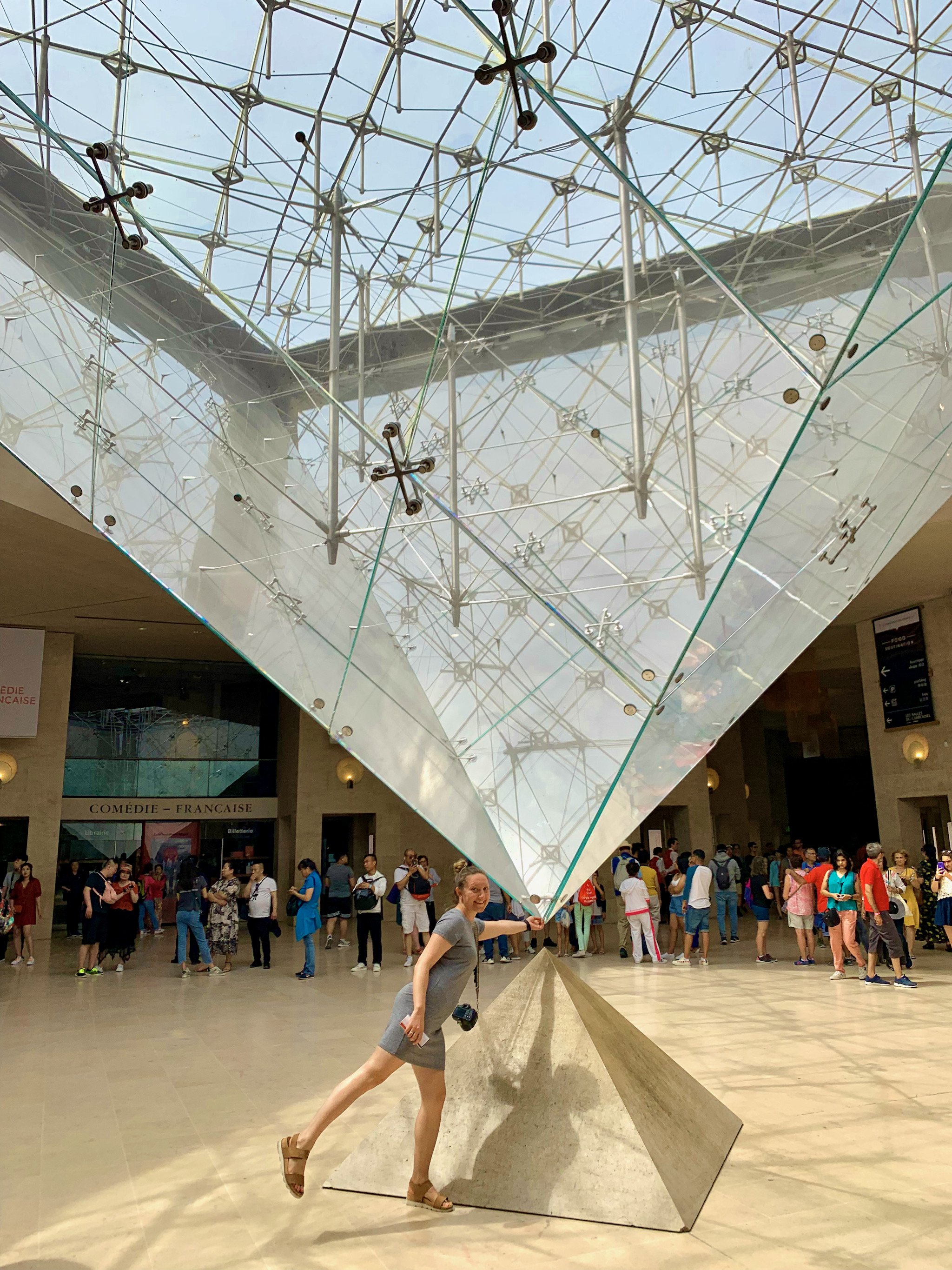


Maximize your time in the City of Lights with this helpful Paris itinerary. Follow this loose plan to see important Parisian sights while living like a Parisian with pastries, cafe culture, and French food.